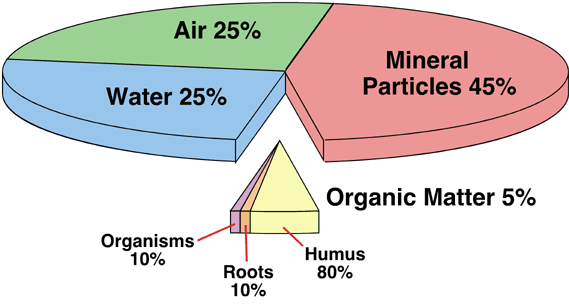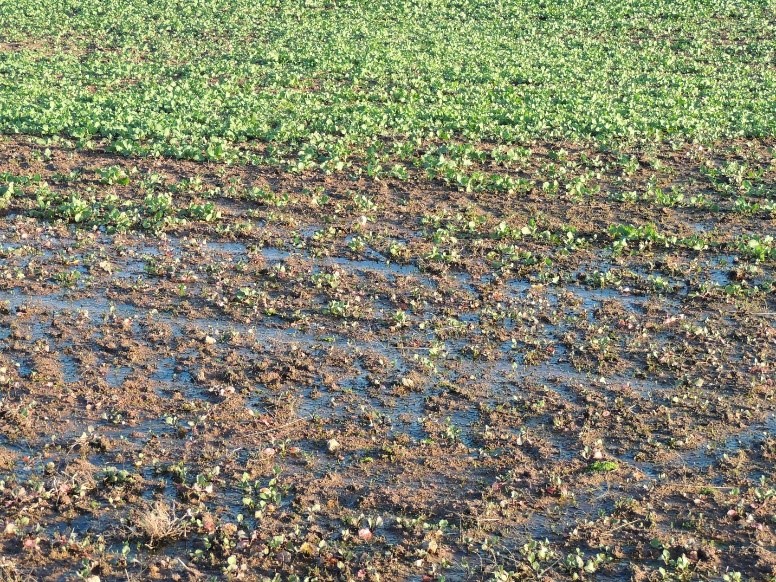Healthy soils and water infiltration in the paddock
04 Aug 2021
Healthy soils are achieved by the physical, chemical & biological characteristics of soil all being in balance. These three factors are all interdependent and are able to be influenced by management.
The rate of water infiltration into soil is an indicator of a physical factor, structure. Structure simply describes the arrangement of the soil solids in relation to air and water components of the soil.
Most healthy soils contain four basic components: Mineral particles, water air and organic matter.

Image source: PhysicalGeography.net 2021
Soil infiltration is a measure of how fast water can flow into the soil. When the flow rate is slow, (less than 30mm/hr) there is an increased chance of run-off from rainfall, that can lead to soil erosion, and the loss of water that could potentially be used for plant growth.
Cropping and pasture paddocks in the wheatbelt average around 30 mm/hr. Paddocks with well-structured soils average 50 to 70mm/hr while paddocks with poorer structured soil average around 5mm/hr,
As soils become denser (compacted) the space for air and water is reduced. When water content increases in the soil, it reduces the percentage of air in the soil. Plants require a minimum of 10% air in the soil for growth.
When soil is saturated, it quickly begins to reduce the growth potential of crops and pastures. When this occurs over an extended period of time, such as the wet winter we are experiencing, plant death will happen.

Saturated soil due to sodic subsoil in a grazing brassica paddock, July 2021.
Image source: Stephen Pereira
Landholders need to identify why their soil is not draining freely. There may be a hardpan, heavy clay or a sodic layer that will slow infiltration. These can be identified by the landholder investigating with a shovel. It may be that a contour bank is blocked and needs cleaning out. If a remedy is physically and economically possible, then paddocks that are difficult or impossible to spray or spread in winter can be bought back into full production. If remediation is not possible, then perennial pasture may be a good option.
For more information contact Central West Local Land Services on 1300 795 299
Source: Central West LLS Managing Soil Health: Practical Manual, 2016.